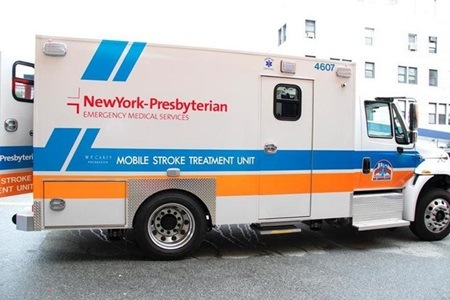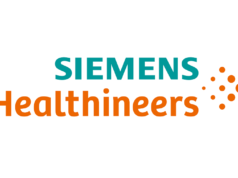
Receiving intravenous tissue plasminogen activator (IV-tPA) in an ambulance-based mobile stroke unit (MSU) increases the likelihood of averting strokes and the odds of a patient achieving complete recovery compared with standard hospital emergency care, according to researchers at Weill Cornell Medicine, NewYork-Presbyterian (both New York City, USA), University of Texas Health (UTHealth) Houston, Memorial Hermann-Texas Medical Center (both Houston, USA), and five other medical centres across the USA.
The study, recently published online in the Annals of Neurology, determined that MSU care was associated with both increased odds of averting stroke compared with hospital emergency medical service (EMS)—18% versus 11%, respectively—and also a higher percentage of patients having an early symptom resolution—31% versus 21%, respectively—within 24 hours after stroke.
“While this is known to improve patient outcomes, how many patients fully recover afterward was not clear from prior research,” said lead author Babak Benjamin Navi (Weill Cornell Medicine, New York City, USA), who is also acting medical director of the MSU, operated by NewYork-Presbyterian in collaboration with Weill Cornell Medicine, Columbia University Irving Medical Center (New York City, USA) and the Fire Department of New York. “On average, the faster you treat someone, the more likely you are to have a good functional outcome, because you are able to preserve more brain tissue. The brain can only sustain reduced blood flow for so long before permanent injury develops.”
Using multicentre trial data from 2014–2020, the researchers evaluated 1,009 patients, 644 of whom received IV-tPA in an MSU and 365 of whom received EMS care. Overall, patients received IV-tPA—a thrombolytic drug that is well-established in stroke care—at a median interval of 87 minutes after the onset of stroke symptoms. The study found that, with IV-tPA treatment in this timeframe, about one in four patients who had a suspected stroke recovered within 24 hours, and one in six averted a stroke with no demonstrable trace of brain injury on magnetic resonance imaging (MRI).
For patients treated by an MSU, the time from symptom onset to treatment was 37 minutes faster versus EMS care, meaning many more patients received “vital” IV-tPA within the “crucial” first hour, according to the researchers. MSU care—which expedites thrombolysis administration—further increased the odds of averting a stroke, with nearly one third of patients recovering to normal within 24 hours. In addition, the researchers found other factors that contributed to better patient outcomes, including treatment within the first 45 minutes, younger age, female gender, history of high cholesterol, lower blood pressure, lower stroke severity, and no blockage of large blood vessels.
According to Navi, this study highlights the need for optimising stroke systems of care, and further expediting the delivery of IV-tPA through MSUs should be “a priority” to increase the proportion of averted strokes. Navi is also hoping that Medicare in the USA will assign MSU services a billing code in the near future so that it can be embedded within stroke systems of care and become a financially viable model. He is currently working with researchers from UTHealth Houston on a study to evaluate the cost effectiveness of MSUs, which is expected to be published in 2024.
“Such studies will hopefully lead to a shift in regulations and reimbursements, and how MSUs are led, managed and integrated within emergency medical services,” Navi added.
Co-principal investigators for BEST-MSU—the prospective study that produced the data for this secondary analysis—were James Grotta (Memorial Hermann-Texas Medical Center, Houston, USA), director of the Mobile Stroke Unit Consortium, and Jose-Miguel Yamal (UTHealth Houston School of Public Health, Houston, USA), while John Volpi (Houston Methodist, Houston, USA) also contributed to these efforts.










